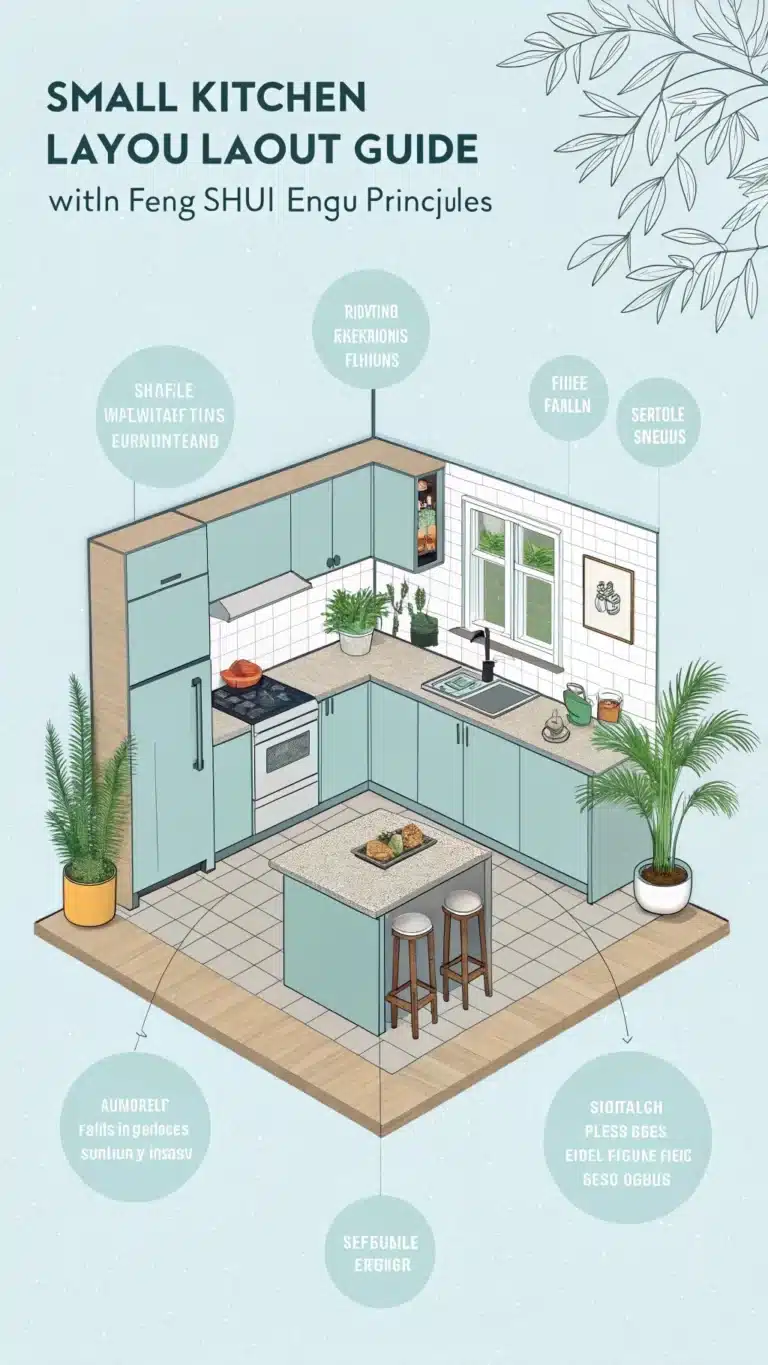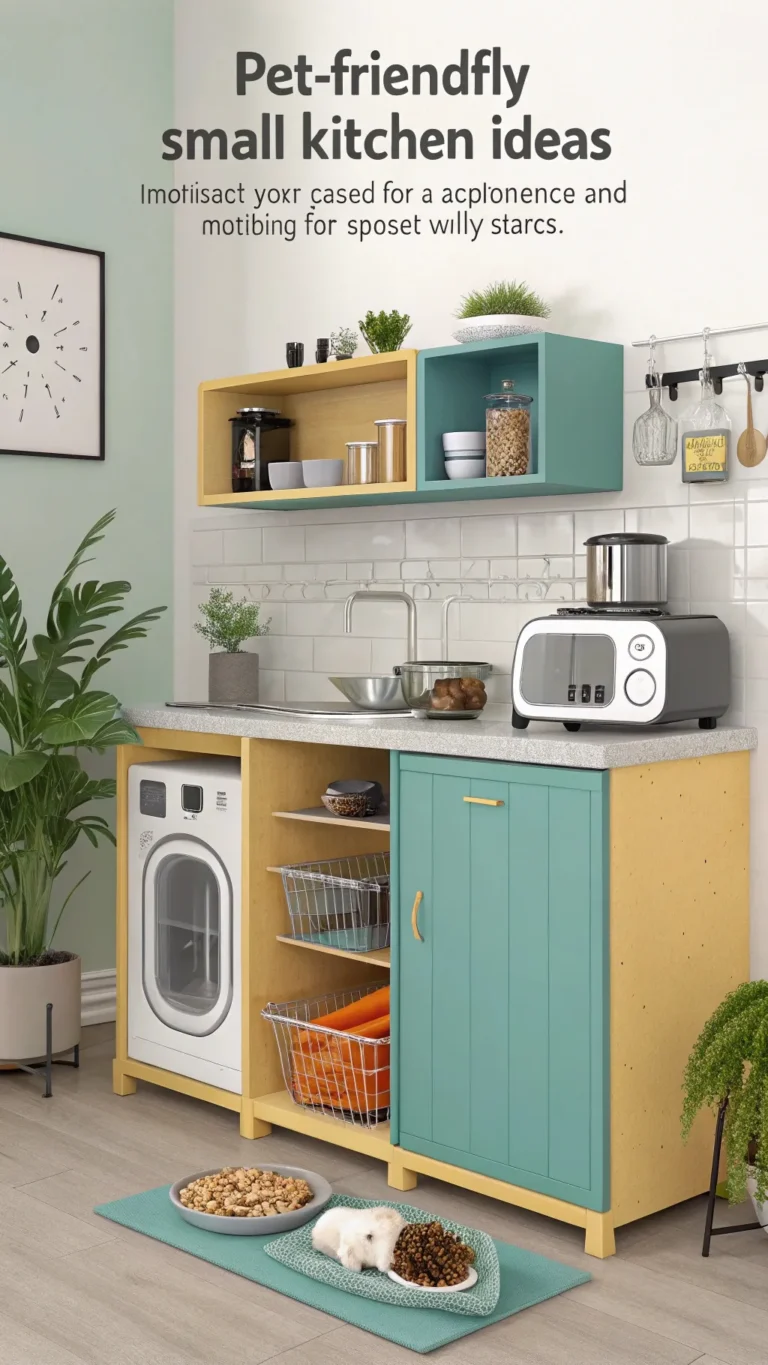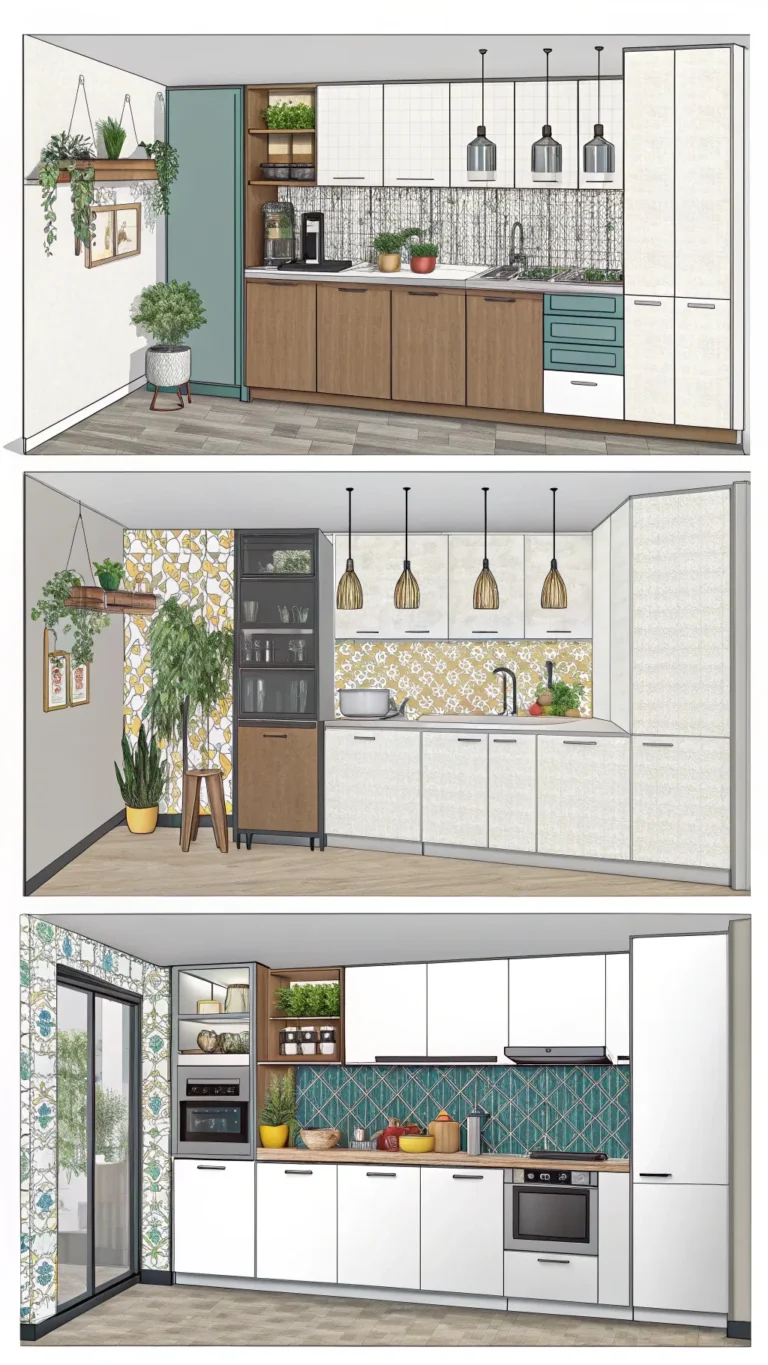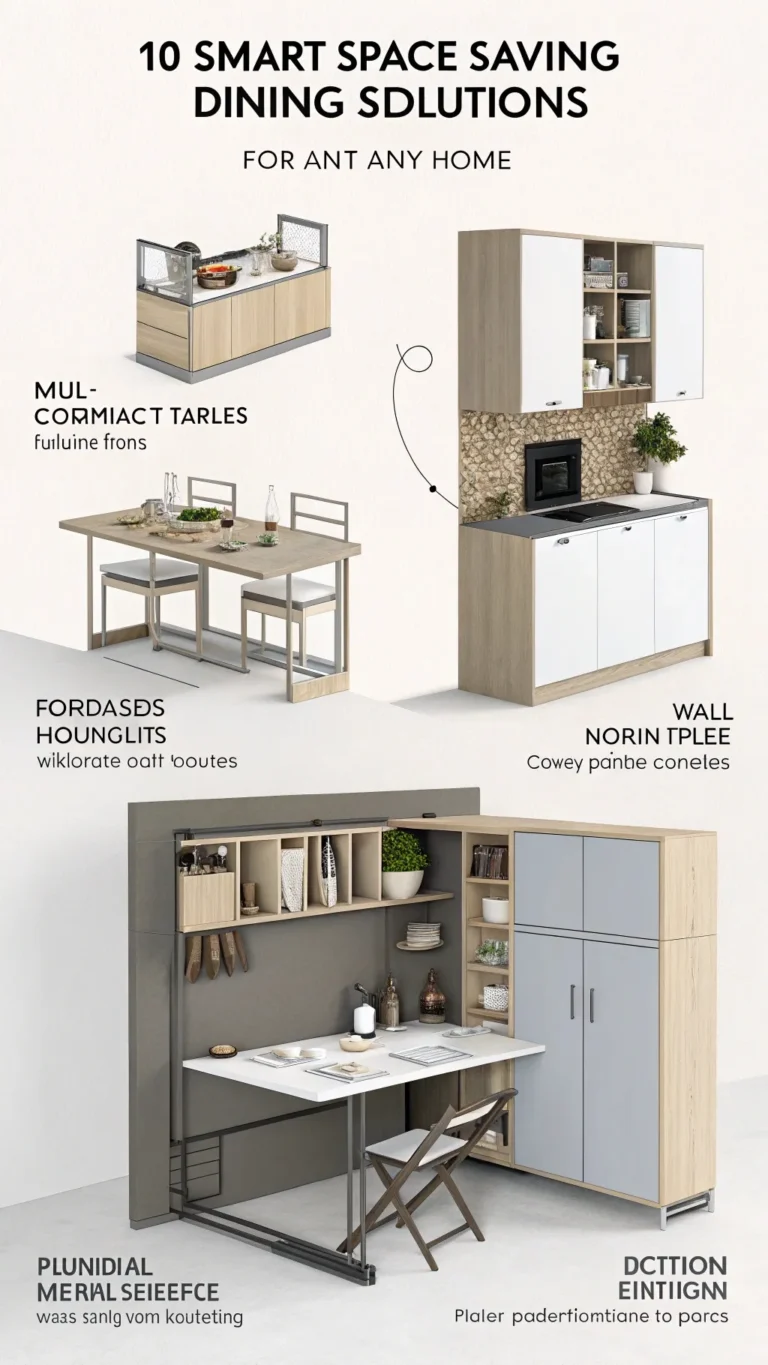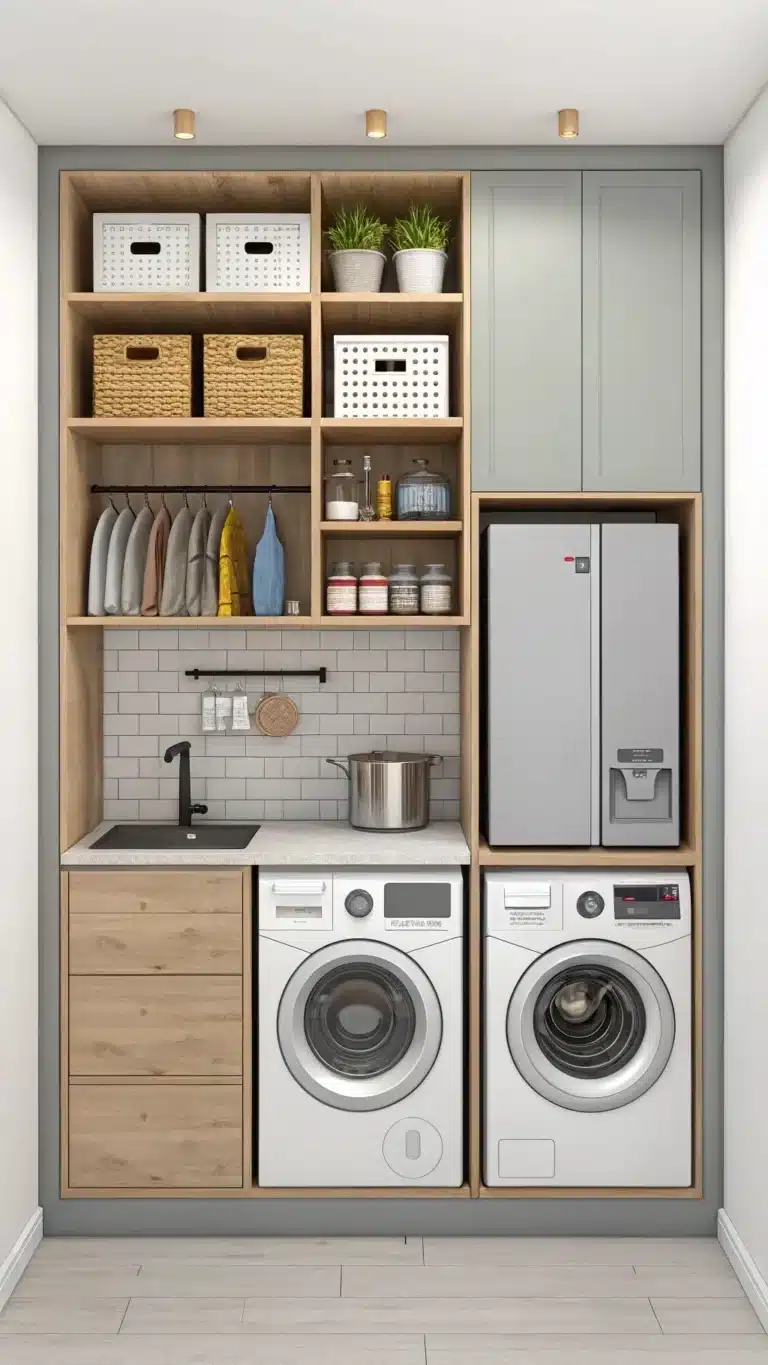Small kitchens test our creativity. Every inch counts, especially where the sink lives. The sink serves as the heart of kitchen activity—from washing vegetables to cleaning dishes. In tight spaces, a bulky or poorly chosen sink drains valuable counters and cramps workflow. But small doesn’t have to mean limiting.
This article shares 10 clever small kitchen sink ideas to transform your space in 2025. From picking the right sink type and size to smart storage and trending materials, these tips will help your kitchen feel larger, work better, and look stylish. We get it—small kitchens are tough! The right sink matters more than ever. Keep reading to learn how to optimize this crucial area without sacrifice.
Why Your Small Kitchen Sink is More Crucial Than Ever
The kitchen sink often acts as the workspace hub. In small kitchens, this spot demands careful attention. A sink that fits badly or lacks function ruins flow and wastes room. Getting the right size, style, and setup makes all the difference.
Assessing Your Space: Measurements Matter
Before choosing a sink, measure carefully. The width of your cabinet under the sink usually sets the maximum sink width. Common cabinet widths run 18 to 36 inches. For example, a 30-inch cabinet often fits a sink 24–27 inches wide.
Also, note the countertop thickness and material. Without this info, undermount sinks might not fit properly. Different layouts also affect options—galley kitchens may work better with wall-mounted faucets, while L-shaped spaces might benefit from corner sinks.
Your Workflow & Habits: How Do You Use Your Sink?
Consider daily habits. Do you cook complex meals or keep it simple? Washing dishes by hand or relying on a dishwasher? Need room for big pots and pans? Want prep space at the sink?
A deep single bowl helps if you clean large pans often. Dual bowls might work if you need separate washing and rinsing zones. Also, consider if you want space for chopping or sorting produce directly by the sink.
Prioritizing Needs: Function vs. Style vs. Budget
Establish what’s essential. Must your sink be stylish or purely functional? Know your budget for the sink and installation. This clarity helps narrow choices and avoids frustration.
Tip: Use a measuring tape to gather cabinet width, countertop thickness, and sink cutout dimensions. Write numbers down and compare them when shopping.
Plan your kitchen layout with care. Matching sink size to space prevents costly mistakes.
Idea 1-5: Sink Types That Conquer Small Kitchen Challenges
Idea 1: Embrace the Single Bowl Sink
A single deep bowl often works best in tight spaces. One large basin handles big pans better than splitting the area into two smaller bowls. It simplifies washing and cleaning.
Pros include more room inside and easier installation. Cons might be lack of divider space for multitasking. Still, many designers recommend deep single bowls for small kitchens.
“A single bowl sink offers simplicity that small spaces crave,” says interior designer Lara Mayo.
Idea 2: Undermount vs. Drop-In – The Space Illusion
Undermount sinks sit below the counter, creating a smooth edge. They make cleaning crumbs easier and visually expand the countertop. However, undermounts require sturdier countertops like granite.
Drop-in sinks rest on top of counters with a rim visible. They install faster and suit laminate counters well. Drop-ins come in many styles and often cost less.
For DIYers new to installation, drop-in may be easier. Choose undermount if aiming for a sleek, modern look and have a stone counter.
Idea 3: The Space-Saving Corner Sink Solution
Corners often stay empty; a corner sink uses that gap cleverly. This trusts hard-to-use space for cleaning, freeing straight counters for prep.
Corner sinks fit unique triangle cabinets, usually smaller in capacity. They can feel cramped if not designed well. Measure carefully and check door clearance before selecting this type.
Idea 4: The Mighty Workstation Sink
Workstation sinks are a popular choice for limited counters. These feature built-in ledges and grooves that hold accessories like cutting boards and drying racks. You gain extra work surface over your sink.
Accessories slide into place, allowing food prep and cleanup without spreading gear around. This efficiency really stretches small kitchens.
Chicago’s kitchen expert Michelle Henry says, “Workstation sinks turn your sink area into a full prep zone, critical for compact spaces.”
Idea 5: Exploring Compact & Bar Sinks
Bar sinks or prep sinks typically serve small beverage stations. But for very tiny kitchens, they may act as main sinks.
These sinks measure around 12–15 inches wide, much smaller than standard models. Expect trade-offs: they lack capacity for big pots. Use them only if space truly cannot hold a full-size sink.
Quick Checklist for Choosing Sink Type:
- Measure cabinet width and countertop thickness
- Understand your daily kitchen habits
- Prioritize size vs. accessories vs. style
- Decide between undermount or drop-in
- Consider corner or workstation sinks if counters are tight
- Use bar sinks only when no other options fit
Idea 6-8: Getting the Dimensions and Durability Right
Idea 6: Mastering Small Kitchen Sink Size
Sink size depends largely on cabinet width. A 24-inch model fits well in most 30-inch cabinets but leaves little wiggle room.
Depth also matters. Deep sinks (9-10 inches) hold more water and dishes while saving counter space. A shallow wide sink wastes volume and leads to splashing.
Look for sinks labeled “compact” or “small kitchen.” Common widths range from 20 to 27 inches, depths 7 to 10 inches.
Idea 7: Material Matters – Durability, Style, and Maintenance
Stainless Steel:
– Affordable and durable.
– Resists stains and heat.
– Makes noise during use.
– Scratches can show, but unique patina develops over time.
– Look for 16 or 18 gauge (16 gauge is thicker and quieter).
Composite Granite or Quartz:
– Highly durable and heat resistant.
– Comes in multiple colors to match decor.
– Expensive and heavy; may need extra cabinet support.
– Scratch and stain resistant.
Fireclay:
– Offers a classic, glossy finish.
– Strong and durable but prone to chipping if struck hard.
– Usually high priced and heavy.
Other materials, like acrylic or cast iron, usually do not suit small kitchens due to weight or maintenance needs.
Idea 8: The Faucet Factor – Complementing Your Small Sink
Pick a faucet sized for your sink. A huge faucet drowns a small basin visually and functionally.
Pull-down or pull-out spray heads provide cleaning flexibility with single bowls. Single-handle faucets fit tight spaces better.
Smart faucets are trending in 2025. Voice-activated controls, touchless sensors, and precise water volume adjustments add convenience.
Simple Guide:
- Measure cabinet width and sink cutout.
- Decide desired sink depth.
- Pick a material matching style, budget, and care needs.
- Choose faucet type that fits and adds convenience.
Compare materials here and find modern faucet ideas.
Idea 9-10: Making the Most of Your Sink Space
Idea 9: Accessorize for Efficiency (Building on Workstation Sinks)
Accessories multiply sink function. Workstation sinks often include cutting boards, colanders, and drying racks custom fit to ledges.
Over-the-sink racks and roll-up drying mats work for non-workstation sinks too. These hold items above the basin, freeing counters.
In-sink dish racks keep drying contained in the sink, saving space.
Choose sinks with rear drains to free under-sink space—an often overlooked trick.
Idea 10: Smart Under-Sink Organization
Organize vertically under the sink. Use pull-out drawers or tiered shelves shaped around pipes. Door racks hold sprays and wipes.
Compact trash bins and recycling containers fit here too. Careful layout beats clutter and increases storage.
Plumbing does limit space, but flexible U-shaped organizers adapt well.
Integrating Smart Tech (2025 Trend)
Smart faucets reduce water waste with automatic shut-off. Leak detectors alert you early, preventing damage.
Smart tech in small kitchens boosts convenience and safeguards, making life easier in tight quarters.
Essential Accessories List:
- Cutting boards sized for sink ledges
- Over-the-sink drying racks or roll mats
- In-sink dish racks for hand-washing
- Pull-out organizers under the sink
- Rear drain sinks to open cabinet space
- Smart faucet and leak detectors
Get organizing tips here and see compact appliances for small kitchens.
Bringing It All Together: Installation, Care, and What’s Next for Small Sinks
Installation Considerations
Install based on your skill level. Drop-in sinks often suit DIY installation. Undermounts usually require a plumber for proper sealing and support.
A professional ensures no leaks and proper water flow. Measure precisely before buying to avoid surprises.
Maintaining Your Small Sink
Clean stainless steel with gentle sponges and baking soda for shine. Composite sinks need soap and soft cloths; avoid harsh chemicals.
Prevent stains and scratches by weekly care. Drain clogs mainly come from grease and food buildup; clear regularly.
Small Sink Trends for 2025 and Beyond
Sustainability rises. Materials made from recycled granite or eco-friendly composites gain popularity.
Minimalist design favors sinks integrated seamlessly into countertops.
Smart faucets with touchless activation become standard.
Workstation sinks evolve with multi-function accessories, maximizing small areas even further.
Maintenance Schedule Idea:
- Daily rinse and wipe down
- Weekly mild cleaning
- Monthly check drains for clogs
- Annual faucet and seal inspection
Find installers via trusted local listings or services.
Learn more: DIY Kitchen Sink Installation and Sustainable Kitchen Trends.
Your Small Kitchen Sink Questions Answered
What is the best type of sink for a very small kitchen?
A deep single bowl sink often works best. Consider workstation or corner sinks if your layout supports them.
How small can a kitchen sink be and still be functional?
Generally, a sink 20 inches wide fits compact cabinets. Depth of 8-10 inches improves usability.
Are workstation sinks worth it for small kitchens?
Yes. They add prep space and help organize efficiently.
How do I organize under a small kitchen sink with pipes?
Use pull-out drawers and U-shaped organizers that fit around plumbing. Vertical shelves help too.
Which small kitchen sink material is the most durable?
Stainless steel and composite granite resist wear best. Consider your style and maintenance preferences.
Finding Your Perfect Small Kitchen Sink Solution
Small kitchens don’t have to mean cramped, inconvenient sinks. These small kitchen sink ideas breathe new life into confined spaces. Assess your layout carefully, match sink type and size to habits and cabinetry, and pick durable materials.
Accessories and smart organization add function and style. The right faucet complements the entire setup.
“Small kitchens just need smart choices,” says designer Nina Alvarez. “The sink is where function meets style.”
Take these ideas and tailor them to your unique space. Your small kitchen can feel roomy, organized, and beautiful.
Share your success stories or ask questions below. Together, we can make every small kitchen sink work harder.
Alt Text Examples for Images:
– Space-saving corner sink in a small kitchen
– Single bowl stainless steel sink for small kitchen
– Workstation sink with cutting board for small kitchen
– Under sink organization solutions for small kitchens
– Compact drop-in sink in a modern small kitchen
– Comparing small kitchen sink materials: stainless steel vs composite
Meta Title: 10 Small Kitchen Sink Ideas: Maximize Space, Function & Style
Meta Description: Struggling with a small kitchen? Explore 10 clever small kitchen sink ideas to maximize space, improve function, and boost style. Get expert tips on types, sizes, & organization.
URL Slug: /small-kitchen-sink-ideas

